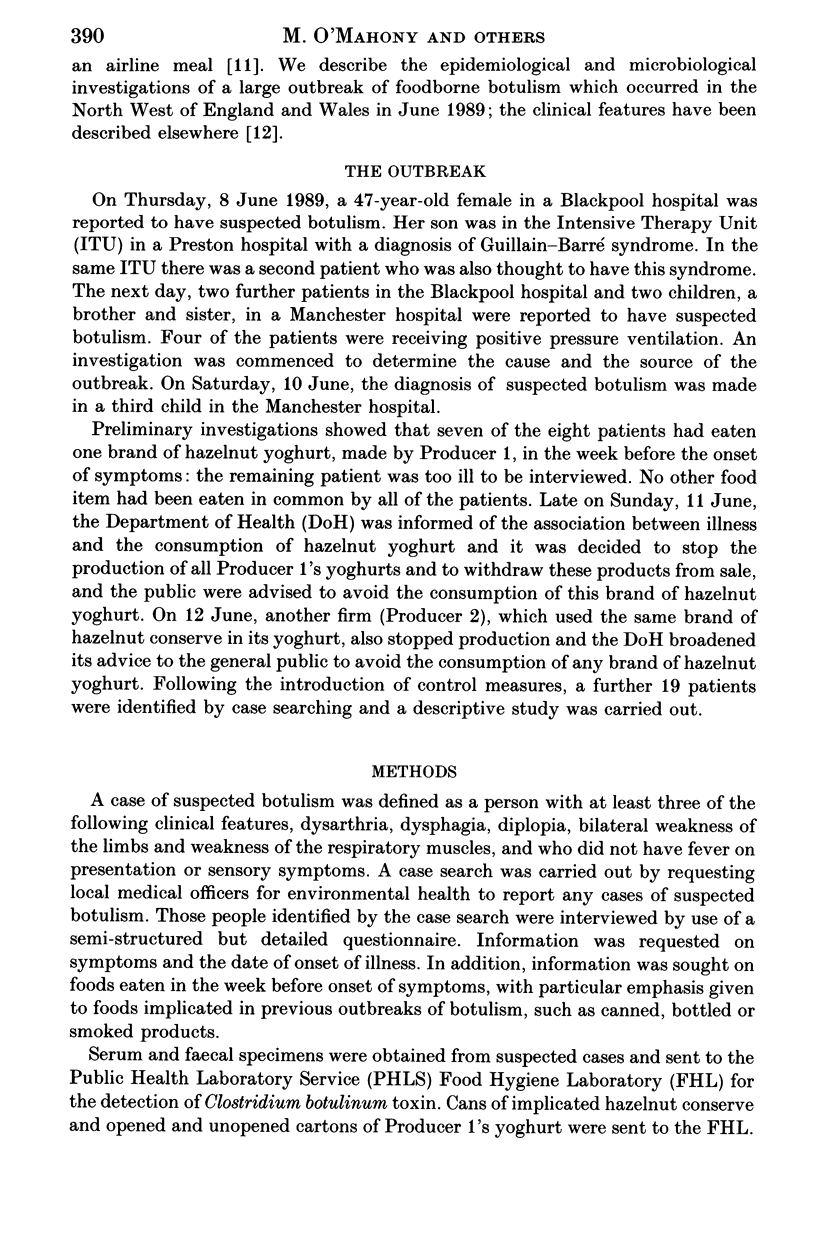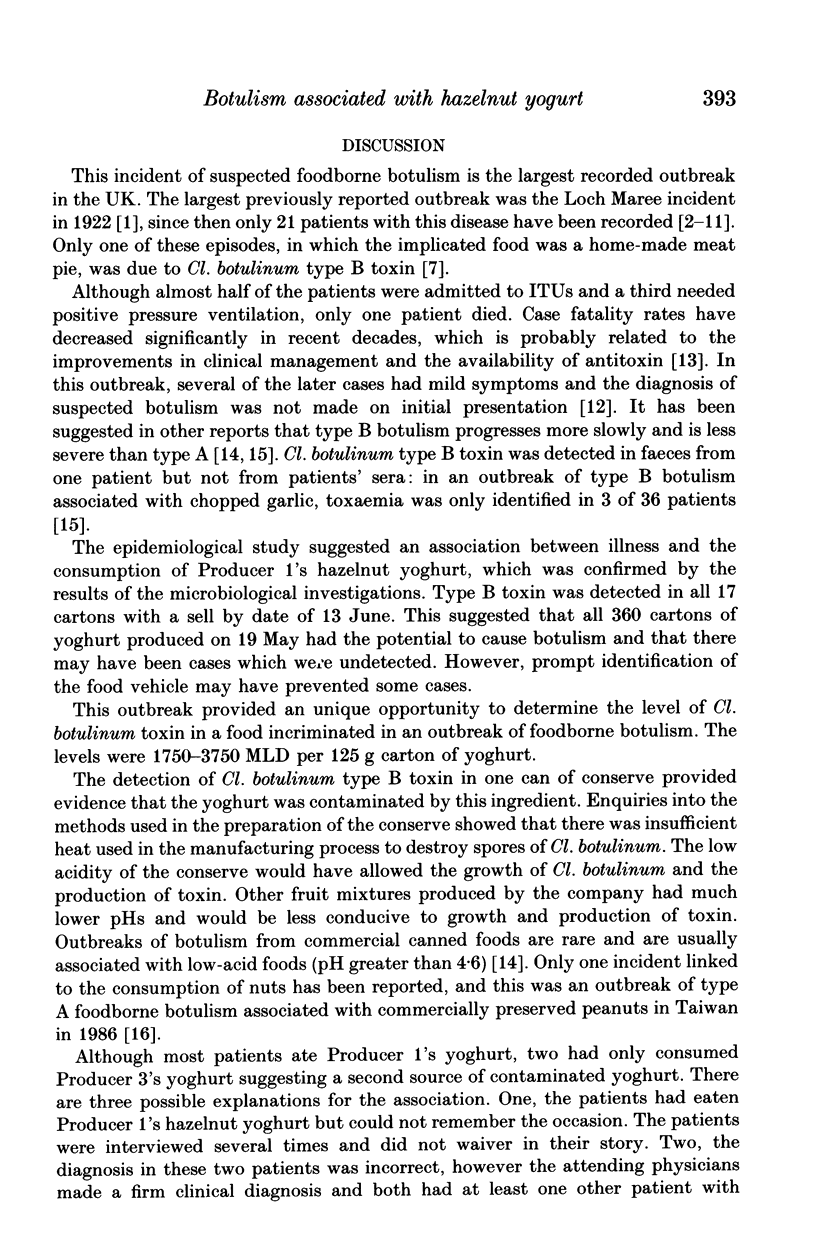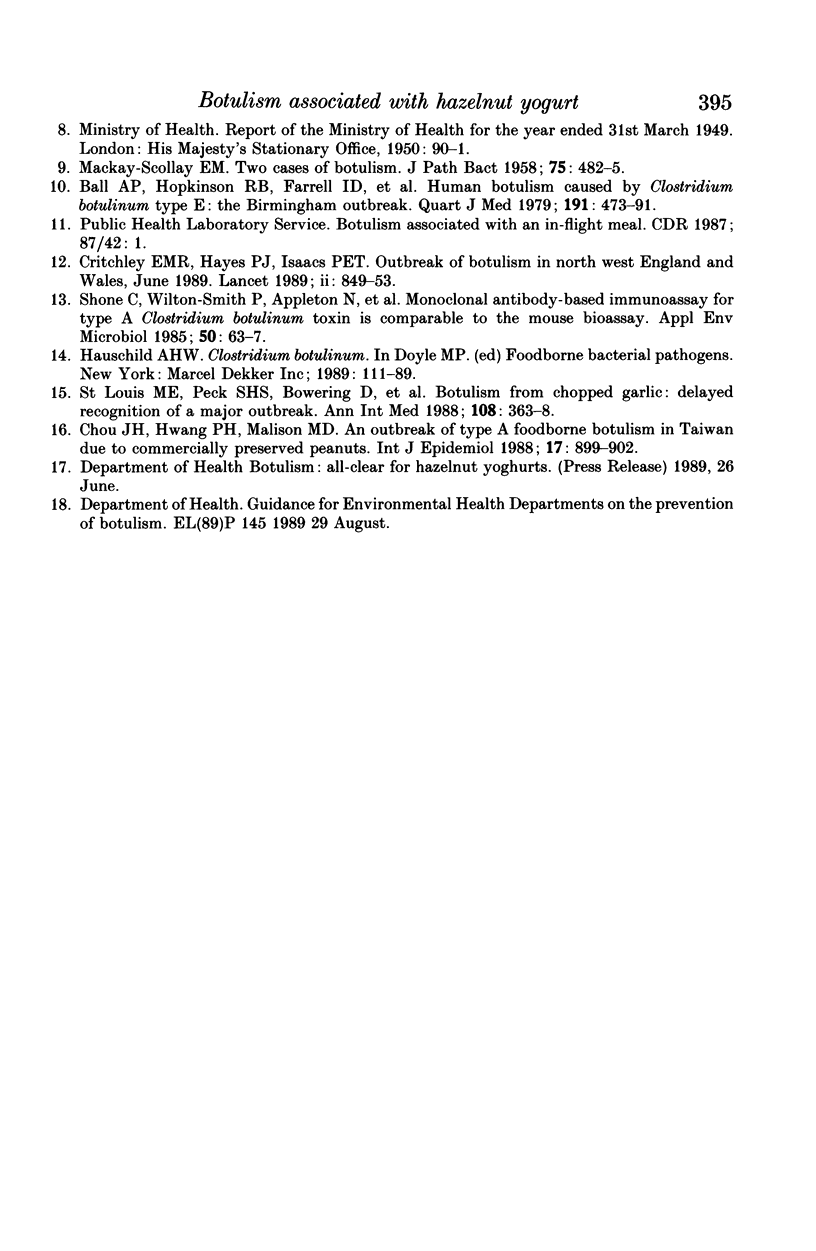Abstract
The largest recorded outbreak of foodborne botulism in the United Kingdom occurred in June 1989. A total of 27 patients was affected; one patient died. Twenty-five of the patients had eaten one brand of hazelnut yoghurt in the week before the onset of symptoms. This yoghurt contained hazelnut conserve sweetened with aspartame rather than sugar. Clostridium botulinum type B toxin was detected in a blown can of hazelnut conserve, opened and unopened cartons of hazelnut yoghurt, and one faecal specimen. Cl. botulinum type B was subsequently cultured from both opened and unopened cartons of the hazelnut yoghurt and from one faecal specimen. Investigations indicated that the processing of the conserve was inadequate to destroy Cl. botulinum spores. Control measures included the cessation of all yoghurt production by the implicated producer, the withdrawal of the firm's yoghurts from sale, the recall of cans of the hazelnut conserve, and advice to the general public to avoid the consumption of all hazelnut yoghurts.
Full text
PDF






Selected References
These references are in PubMed. This may not be the complete list of references from this article.
- Ball A. P., Hopkinson R. B., Farrell I. D., Hutchison J. G., Paul R., Watson R. D., Page A. J., Parker R. G., Edwards C. W., Snow M. Human botulism caused by Clostridium botulinum type E: the Birmingham outbreak. Q J Med. 1979 Jul;48(191):473–491. [PubMed] [Google Scholar]
- Chou J. H., Hwang P. H., Malison M. D. An outbreak of type A foodborne botulism in Taiwan due to commercially preserved peanuts. Int J Epidemiol. 1988 Dec;17(4):899–902. doi: 10.1093/ije/17.4.899. [DOI] [PubMed] [Google Scholar]
- Critchley E. M., Hayes P. J., Isaacs P. E. Outbreak of botulism in north west England and Wales, June, 1989. Lancet. 1989 Oct 7;2(8667):849–853. doi: 10.1016/s0140-6736(89)93010-9. [DOI] [PubMed] [Google Scholar]
- MACKAY-SCOLLAY E. M. Two cases of botulism. J Pathol Bacteriol. 1958 Apr;75(2):482–485. doi: 10.1002/path.1700750235. [DOI] [PubMed] [Google Scholar]
- Shone C., Wilton-Smith P., Appleton N., Hambleton P., Modi N., Gatley S., Melling J. Monoclonal antibody-based immunoassay for type A Clostridium botulinum toxin is comparable to the mouse bioassay. Appl Environ Microbiol. 1985 Jul;50(1):63–67. doi: 10.1128/aem.50.1.63-67.1985. [DOI] [PMC free article] [PubMed] [Google Scholar]
- St Louis M. E., Peck S. H., Bowering D., Morgan G. B., Blatherwick J., Banerjee S., Kettyls G. D., Black W. A., Milling M. E., Hauschild A. H. Botulism from chopped garlic: delayed recognition of a major outbreak. Ann Intern Med. 1988 Mar;108(3):363–368. doi: 10.7326/0003-4819-108-3-363. [DOI] [PubMed] [Google Scholar]


